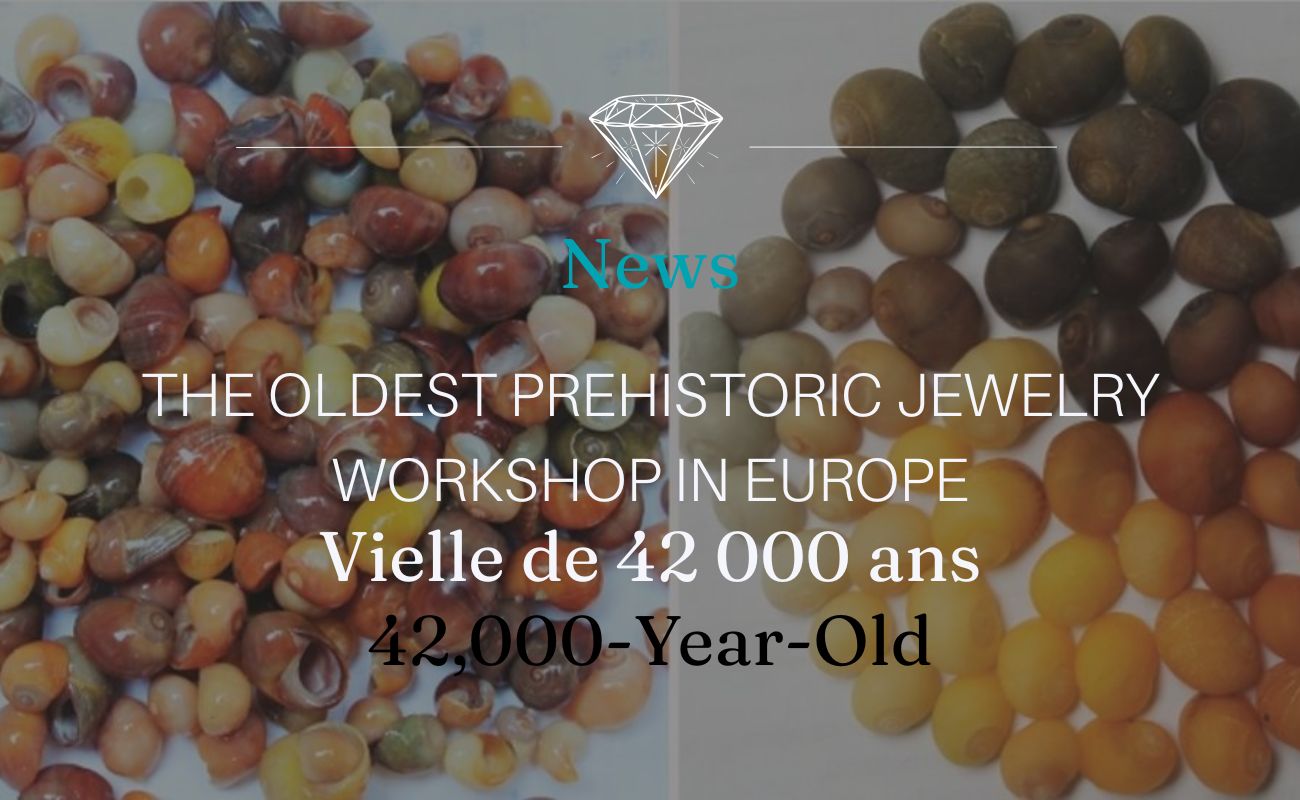Jewellery
The Oldest Prehistoric Jewelry Workshop in Europe: A 42,000-Year-Old Shell Atelier Discovered in Charente-Maritime

In the heart of Charente-Maritime, at the Roche à Pierrot site in Saint-Césaire, a research team from the Pacea laboratory (University of Bordeaux – CNRS) uncovered a shell jewelry workshop dating back at least 42,000 years. Published in the scientific journal PNAS, this discovery is considered the oldest known jewelry workshop in Western Europe.
Archaeologists unearthed around one hundred marine shells from the Littorina genus, including about thirty pierced or polished specimens, along with red and yellow pigments. These findings indicate a structured artisanal activity, most likely linked to a society of Upper Paleolithic hunter-gatherers.
Shells Carefully Selected and Expertly Crafted
The shells, naturally varied in color and shape, were meticulously chosen. Several feature regular perforations made using precise tools. These early beads were likely worn as necklaces, bracelets, or sewn onto clothing.
Researchers suggest a combination of aesthetic and symbolic purposes. The pigments found on-site were not used to color the shells directly, but perhaps to decorate associated materials such as hides or textiles.
The marine origin of the shells also suggests that the inhabitants traveled long distances or engaged in resource exchanges to acquire these rare materials—evidence of an already well-developed social and cultural network.
The Art of Adornment: A Universal Language Before Words
Wearing jewelry 42,000 years ago was far from trivial. These shell ornaments likely played a role in identity and symbolic communication: expressing group belonging, social status, or spiritual beliefs.
According to Isabelle Crevecoeur, paleoanthropologist and excavation director, “these objects reflect a form of symbolic thinking, a universal visual language that predates writing by tens of thousands of years.”
Similar discoveries in North Africa and the Near East support this hypothesis. Long before arriving in Europe, early Homo sapiens were already expressing identity and culture through adornment. The Saint-Césaire workshop confirms that this tradition took root firmly in prehistoric European societies.

From Shells to Modern Jewels: A Timeless Tradition
Although the materials used today have evolved, the meaning of jewelry has not. To wear a piece of jewelry is to communicate, stand out, and convey emotion.
From Paleolithic shell beads to contemporary gold and silver creations, adornment remains a bridge between craftsmanship, memory, and artistic expression.
The tiny polished shells of Saint-Césaire are therefore more than archaeological curiosities—they embody the first sparks of human creativity, the birth of symbolic behavior, and the timeless desire to embellish both oneself and the world.
© S. Rigaud / PACEA